Small businesses are constantly looking for innovative ways to engage their customers and stand out in a crowded marketplace. One effective strategy is Gamification Marketing, which involves using game design elements to drive customer interaction and loyalty.
By incorporating gamification elements into their marketing strategies, small businesses can create a more immersive and engaging experience for their customers. But what is the real Return on Investment (ROI) of Gamification Marketing for small businesses?

This article will explore the ROI of Gamification Marketing for small businesses, providing insights into its effectiveness and potential benefits.
Table of Contents
How much return can gamification bring?
Gamification can bring a significant return on investment (ROI) for businesses when implemented strategically, because it directly taps into human psychology by making customer interactions more engaging, rewarding, and memorable. Studies show that gamification can increase customer engagement by up to 60%, while companies that apply gamified loyalty programs often report higher retention rates and repeat purchases. For small businesses, this means more than just short-term sales—it fosters long-term relationships with customers who feel more connected to the brand. Additionally, gamification can boost employee productivity and motivation by turning routine tasks into rewarding challenges. While the exact return varies depending on industry, goals, and execution, businesses that leverage gamification effectively often see improved customer satisfaction, higher lifetime value, and stronger brand loyalty—all of which translate into measurable financial growth.
Why is gamification cost-effective compared to ads?
Gamification is cost-effective compared to traditional advertising because it focuses on engaging users in a meaningful and interactive way rather than simply broadcasting a message. Unlike ads, which often require continuous spending for visibility and can be ignored or skipped by audiences, gamification encourages users to actively participate, creating long-term engagement and loyalty. By integrating game mechanics—such as points, challenges, and rewards—into marketing campaigns, businesses can generate organic interactions, social sharing, and repeat visits without constantly increasing their budget. Additionally, gamified experiences provide valuable data on customer behavior and preferences, allowing companies to optimize their strategies and reduce wasted spending. Overall, gamification leverages creativity and engagement to achieve higher ROI, making it a more sustainable and cost-efficient alternative to traditional advertising.
Ready to Transform Your Business with Gamification Marketing?
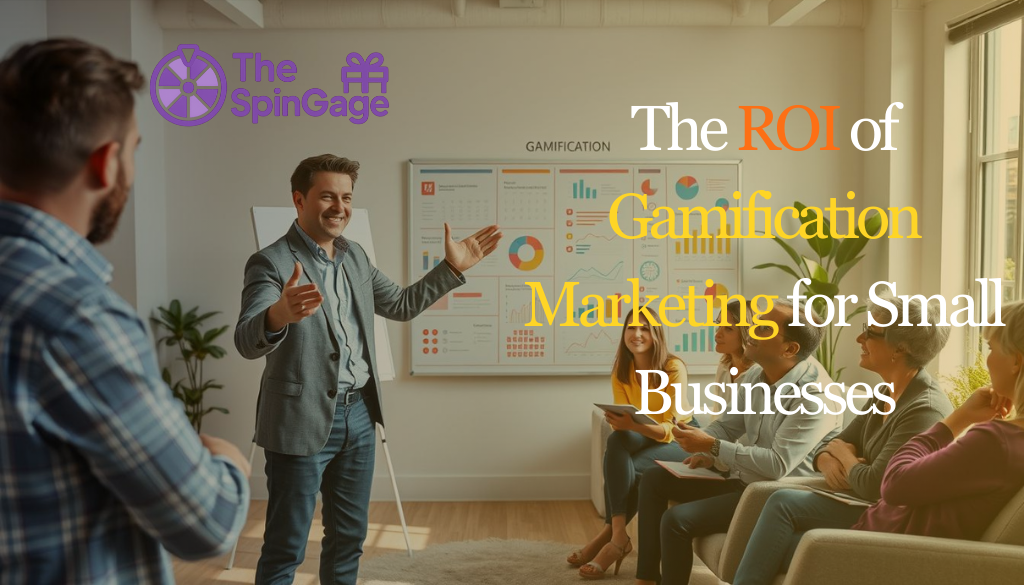
In today’s hyper-competitive digital world, customer attention is the most valuable currency—and keeping it requires more than just traditional marketing tactics. This is where Gamification Marketing becomes a game-changer.
By integrating playful, rewarding, and interactive experiences into your customer journey, you can turn casual visitors into engaged participants and loyal brand advocates. Imagine your customers not just scrolling past your offers, but actively competing in challenges, earning points, unlocking rewards, and sharing their achievements with friends—all while staying connected to your brand. For small businesses, the return on investment is huge: higher engagement, stronger customer loyalty, valuable behavioral data, and most importantly, increased conversions and sales. At The Spingage, we specialize in creating tailored gamification strategies that not only captivate your audience but also drive measurable growth for your business.
How does SpinGage maximize ROI with minimal setup?
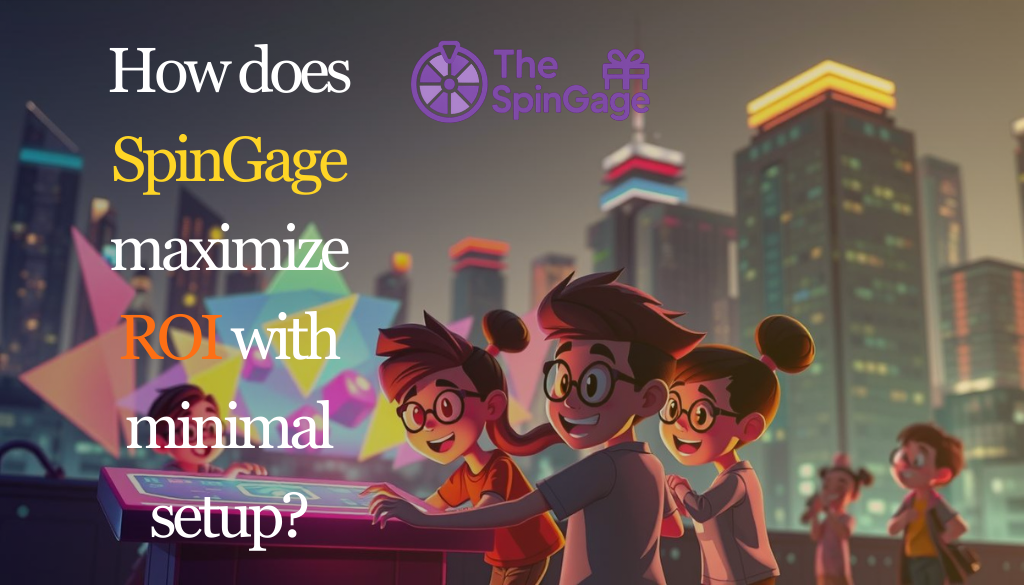
SpinGage Maximizes ROI with Minimal Setup
SpinGage is designed to deliver maximum return on investment with minimal setup by streamlining the gamification marketing process for businesses. Unlike traditional marketing strategies that require extensive planning, costly tools, and prolonged implementation periods, SpinGage offers an intuitive, plug-and-play platform that allows businesses to quickly engage their audience. Its ready-to-use game elements, such as point systems, leaderboards, and interactive challenges, are easily integrated into existing digital channels, eliminating the need for complex technical work. By focusing on immediate customer engagement and measurable results, SpinGage enables businesses to track user interactions, analyze behavior, and optimize campaigns in real-time. This approach not only reduces upfront costs but also accelerates the impact of marketing efforts, ensuring that small and medium-sized enterprises can achieve meaningful ROI without investing heavily in resources or time.
How does SpinGage automate review collection?
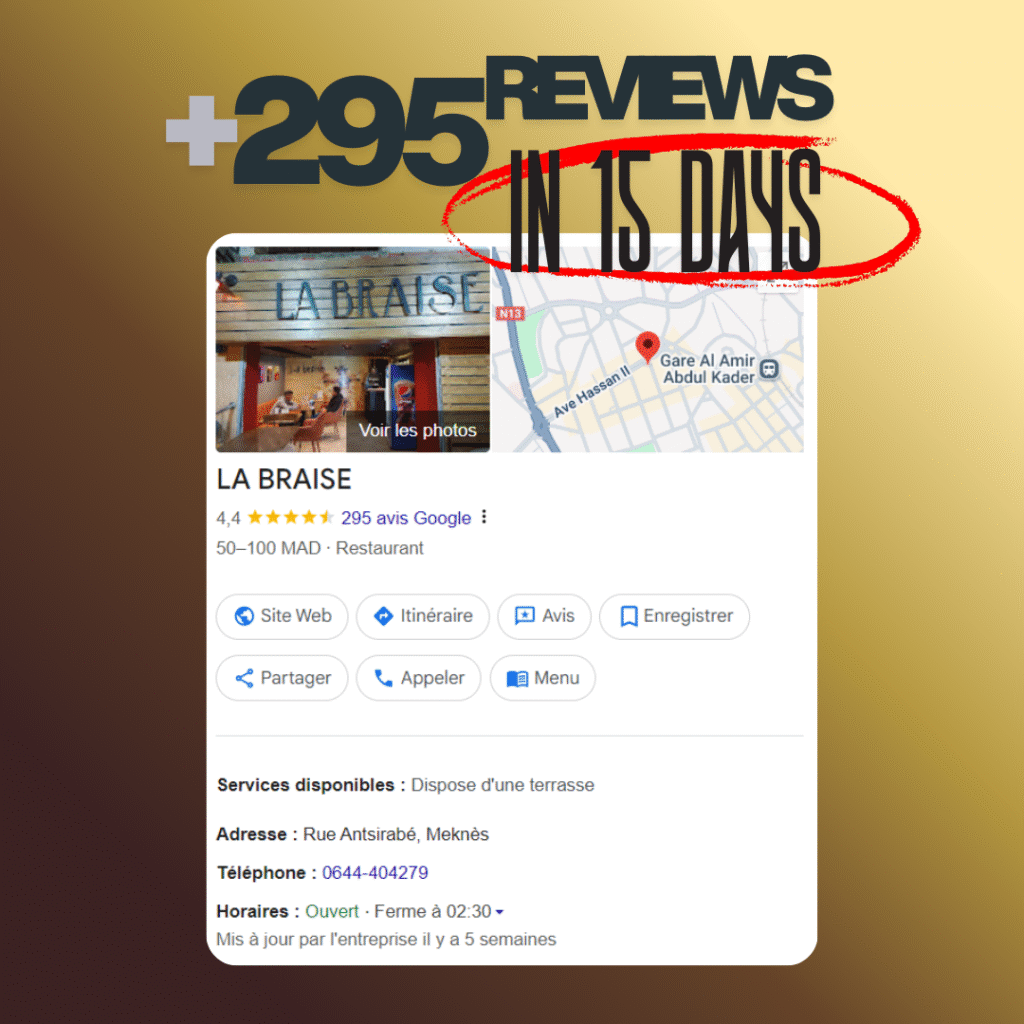
+295 REVIEWS IN JUST 15 DAYS :
Labraise is a restaurant that gained more than 295 new customer reviews and increased their income by using TheSpinGage solution.
They placed a flyer with a QR code on every table, allowing each diner to scan and spin the wheel. Labraise used a 100% winning ratio plan, where customers always won either 10% off their meal or a free soda.
This simple gamification encouraged guests to leave reviews, boosted loyalty, and kept customers coming back.
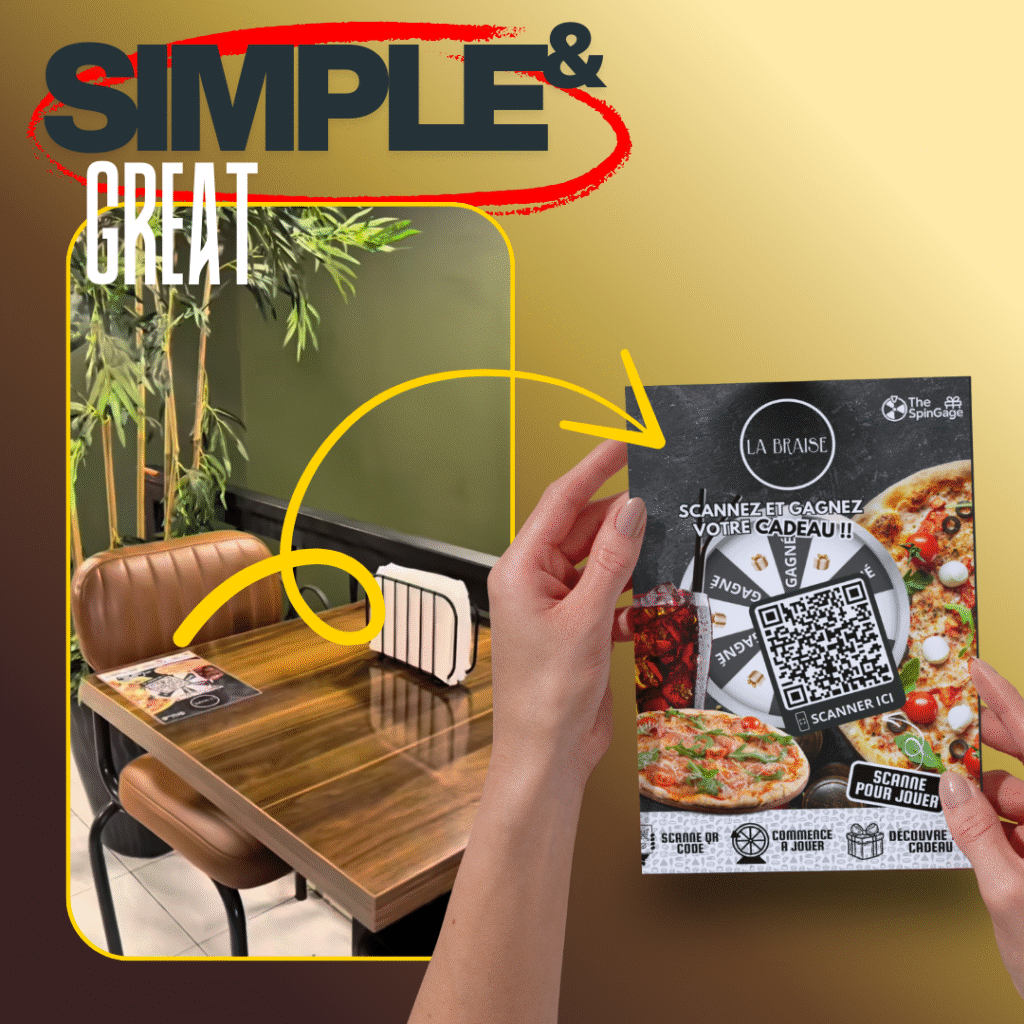
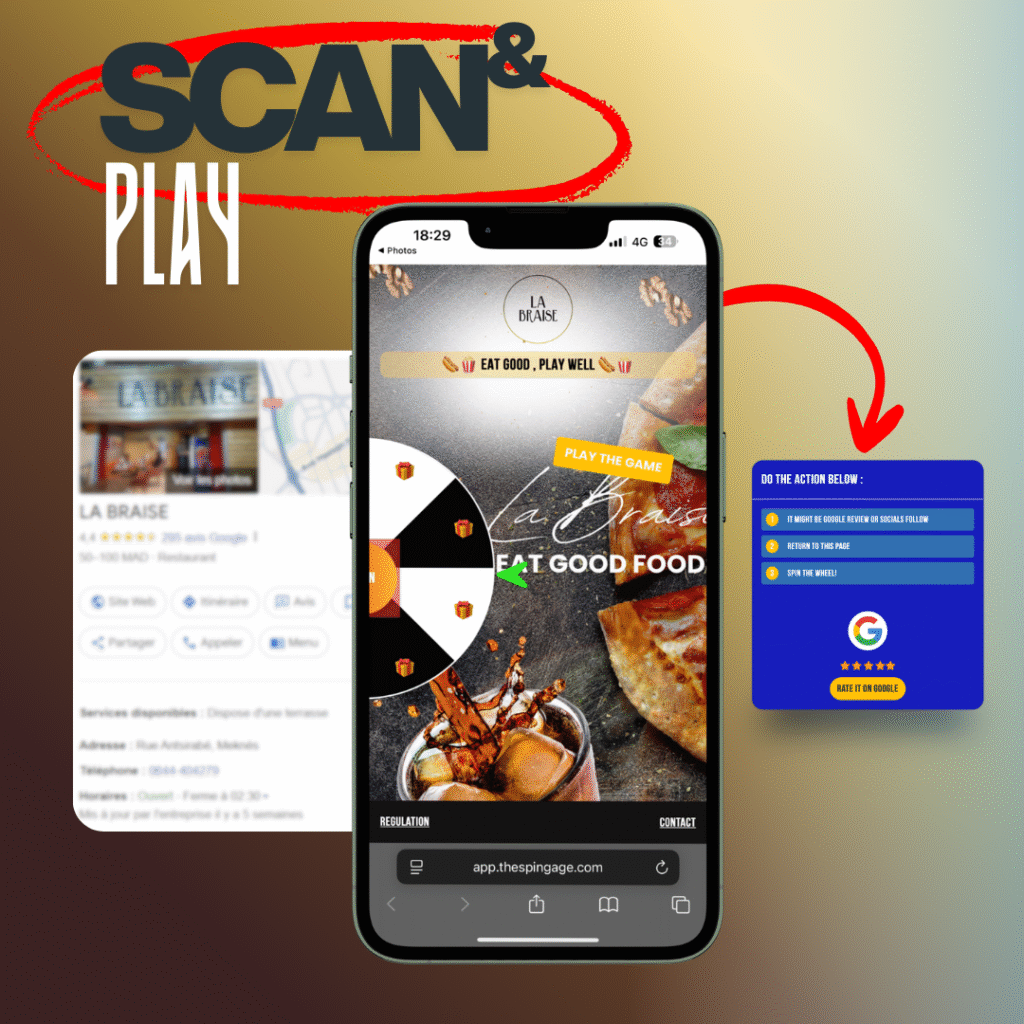
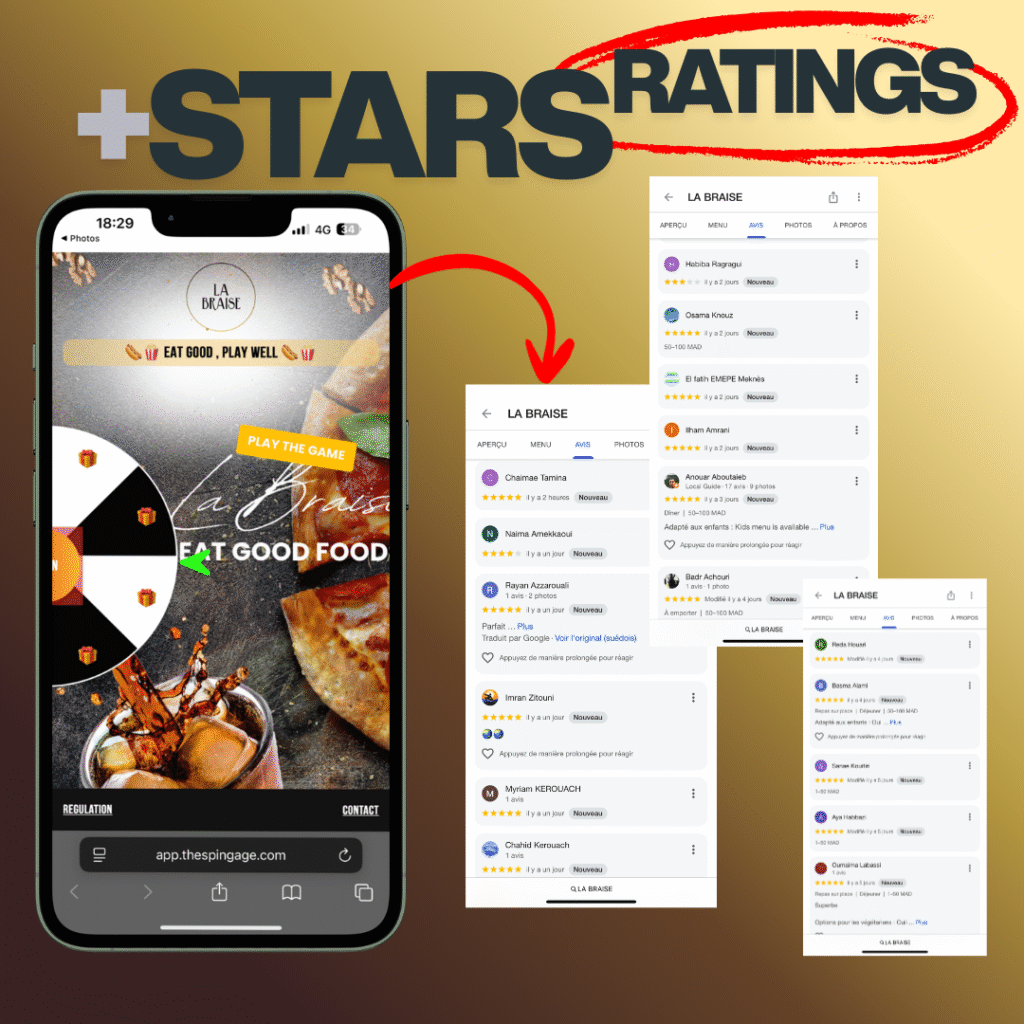
HOW IT WORKS IN 4 EASY STEPS ?
1 – Scan the QR Code
Clients simply scan the QR code placed on the table or provided directly by you.
2- Take Action First
To unlock the gameplay, they must complete the required action.
3- Spin the Wheel
Once unlocked, they spin the wheel to test their luck.
4- Win Rewards
If they win, a QR code is instantly sent to their email. If not, nothing happens. In both cases, the game is locked for 24 hours, ensuring fairness and excitement for the next try.
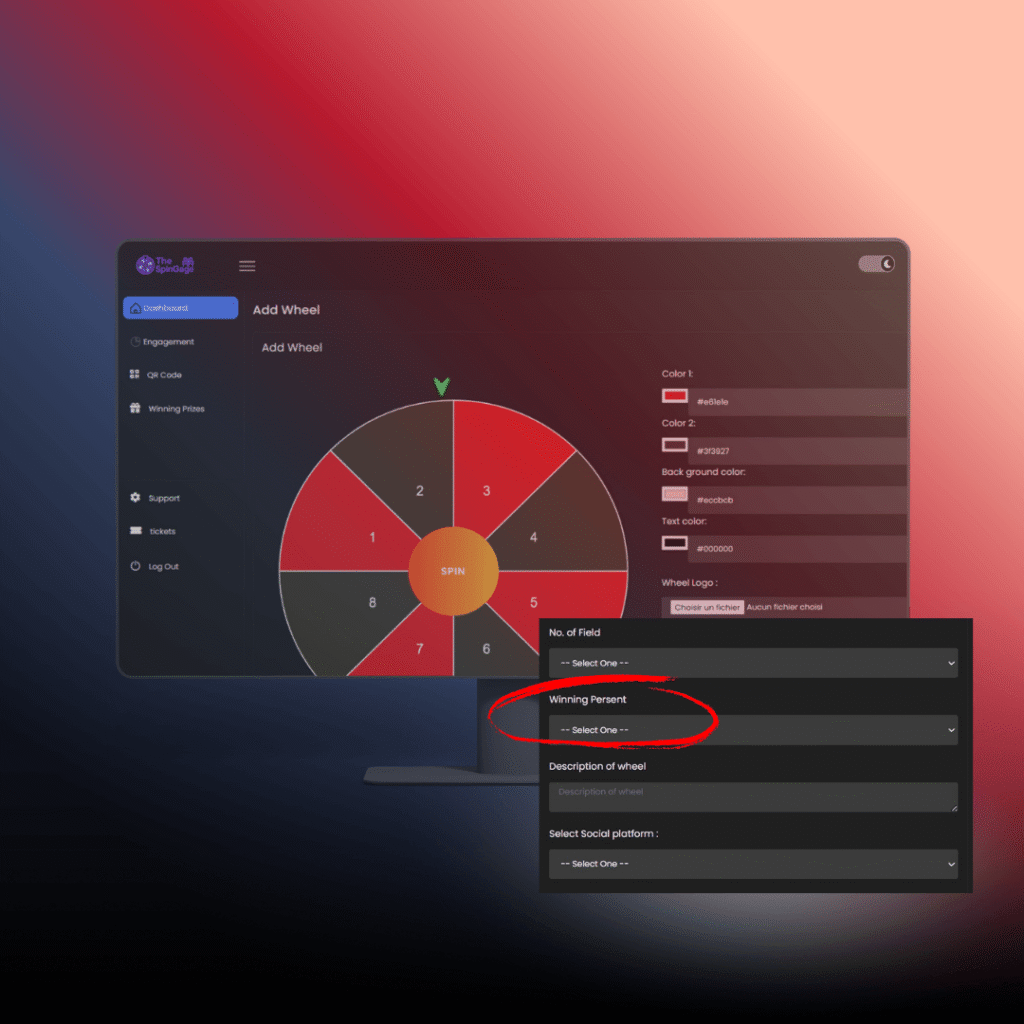
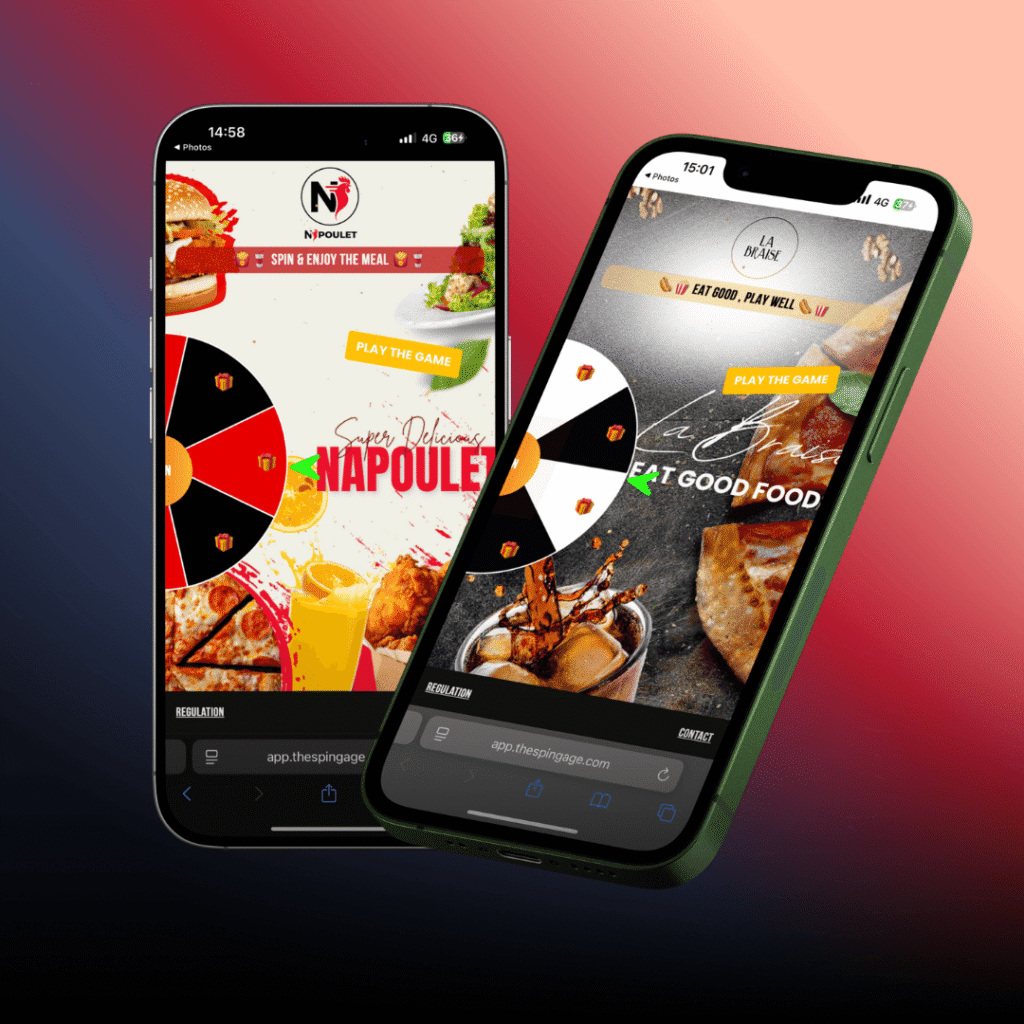
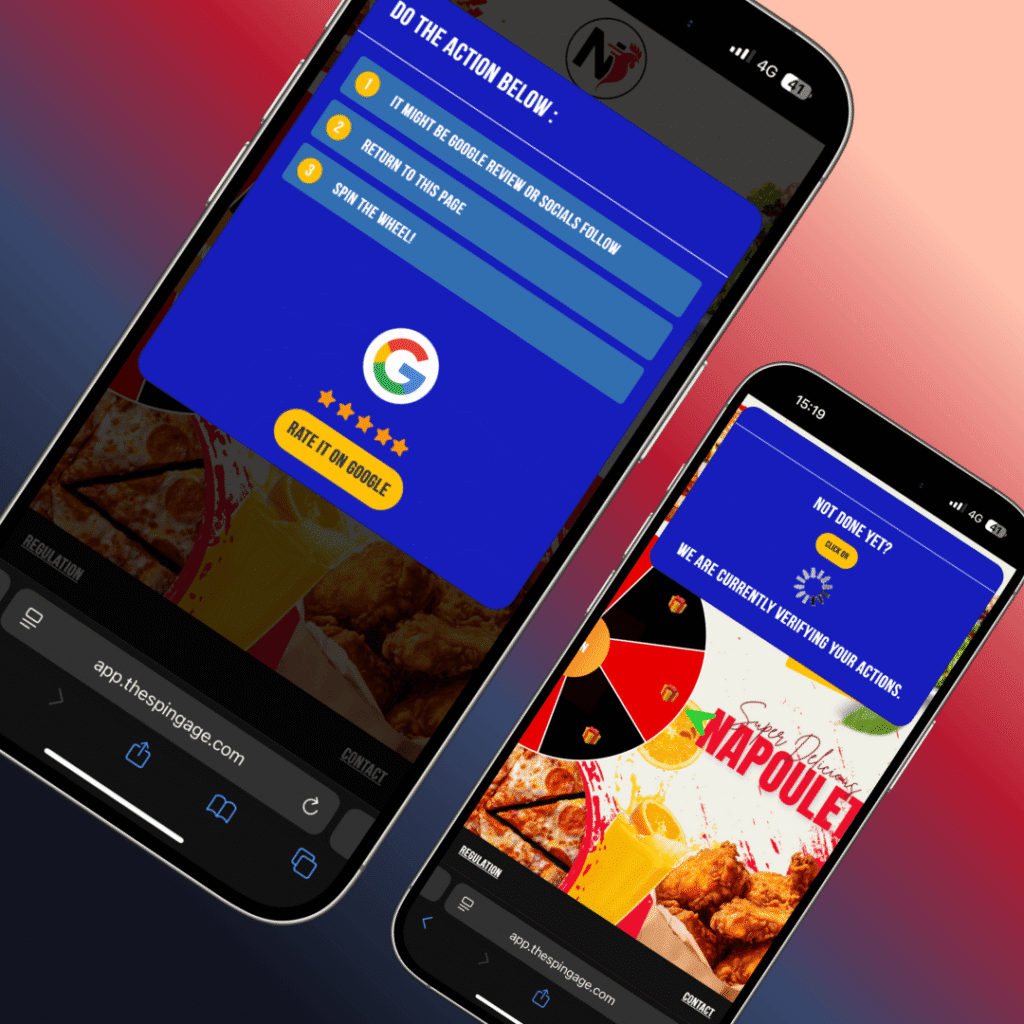
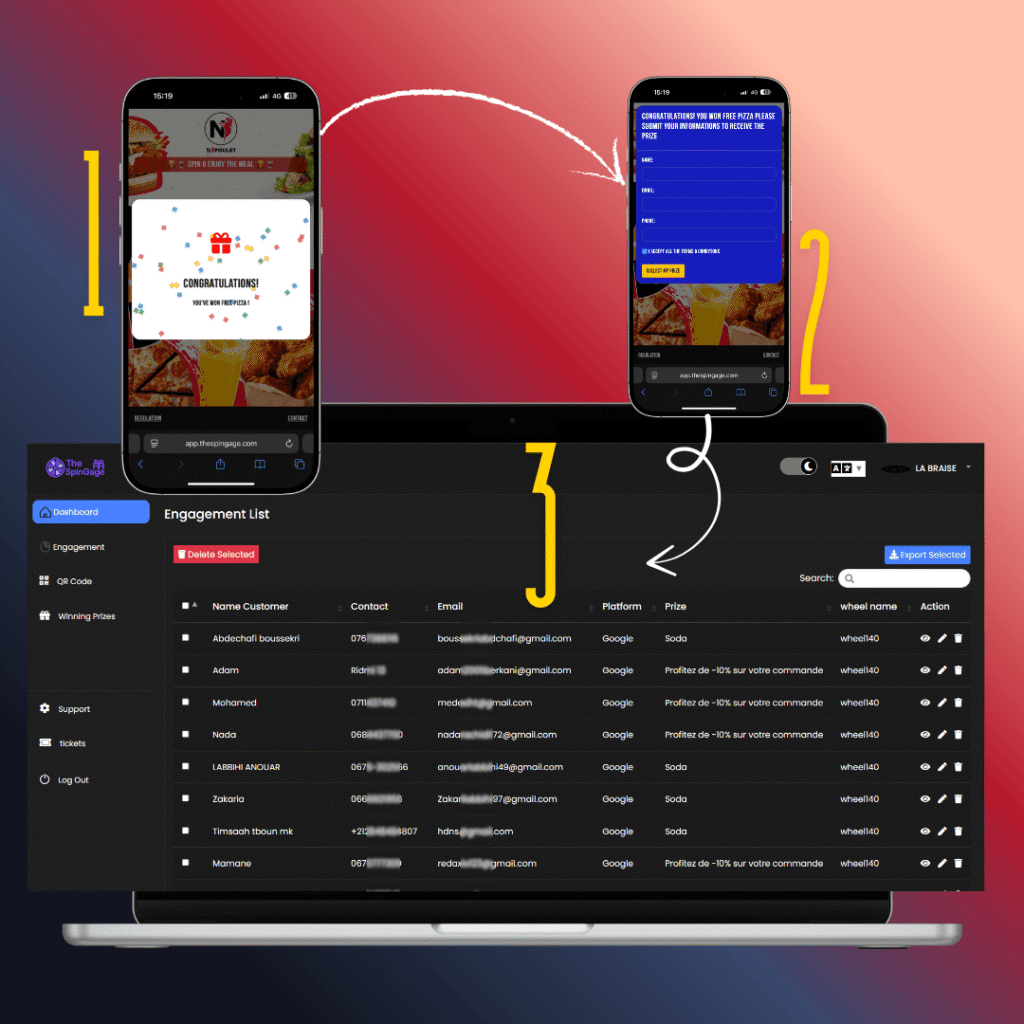
🛠️ Flexible Tracking Options
Track platform Top performing .
Track the wheel segments (number of prizes, Winner Gameplay).
Number of Plays , Track top performing wheel
Set up expiration dates for vouchers and offers.
Get Acces to LEADS , Extraxt & Modiify it .
Why You Should Opt for TheSpinGage Solution
Running a business today is not just about serving customers – it’s about creating memorable experiences that keep them coming back and spreading the word. That’s exactly what TheSpinGage delivers.
🎯 Stand Out from Your Competitors
Most restaurants, cafés, and shops rely only on discounts or word of mouth. With TheSpinGage, you turn every visit into a fun, interactive moment that clients remember and talk about.
⭐ Collect More Positive Reviews
Google reviews are the new “digital reputation.” Our system motivates clients to leave reviews in exchange for a chance to win rewards – giving you the social proof that attracts new clients effortlessly.
💌 Grow Your Customer Database
Every spin is an opportunity to collect emails and data, helping you stay connected with your clients through newsletters, promotions, and loyalty campaigns.
🔄 Boost Loyalty and Repeat Visits
Customers love rewards. By making every visit a chance to win, you encourage repeat visits, turning occasional clients into loyal fans of your business.
⚡ 100% Simple & Automated
No technical headaches. Once installed, TheSpinGage works automatically – whether through QR codes on tables, flyers, or digital screens. You just set the rules, and the system does the rest.
👉 TheSpinGage isn’t just a tool – it’s your new customer magnet.
Increase engagement, grow your reviews, and build a strong database without spending more on ads.
📲 Activate TheSpinGage today and turn visitors into loyal, returning customers!
START TODAY
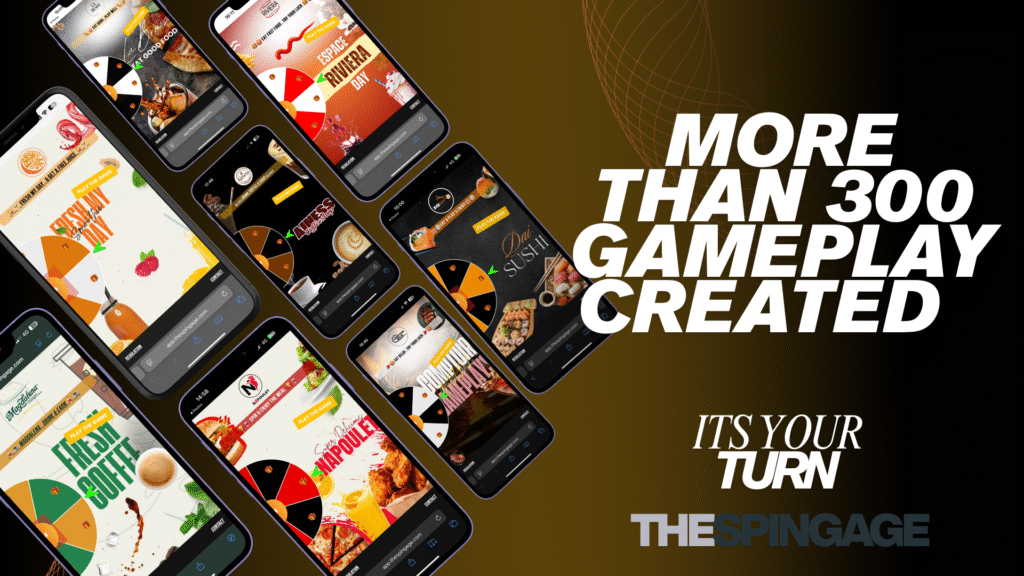
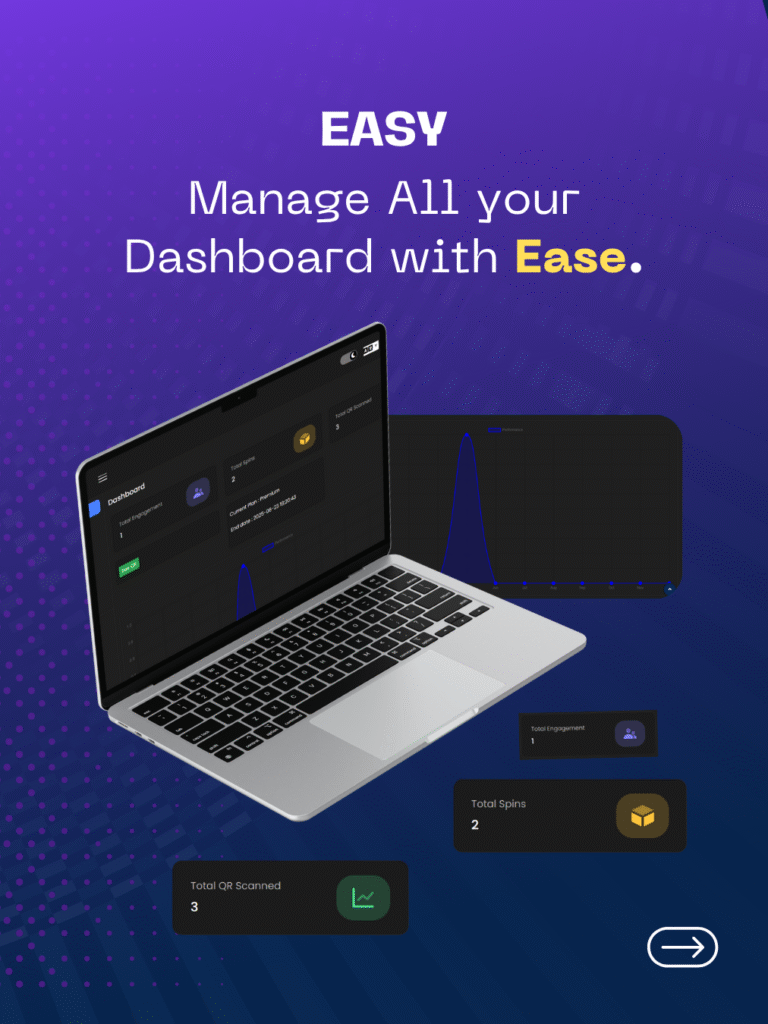
SpinGage automates review collection by seamlessly integrating with your business platforms to prompt customers for feedback at the right moment. It can automatically send personalized review requests via email or SMS after a purchase or service, making it easy for customers to share their experiences. This automation not only increases the volume of reviews but also ensures consistent and timely feedback, helping businesses maintain a strong online reputation without manual effort.
Combine this with strategic local SEO practices, including keyword research, category optimization, and building citations and backlinks, and you’re positioning your business to dominate local search
Don’t just market—make your customers play, interact, and stay.
👉 Discover Gamification Marketing with The Spingage
What is Gamification Marketing and Why It Matters
In today’s competitive market, gamification marketing has emerged as a powerful tool for businesses to engage their customers. Gamification involves using game design elements and mechanics in a non-game context to encourage participation and engagement. By doing so, businesses can create a more interactive and enjoyable experience for their customers.
Gamification marketing is not just about making marketing fun; it’s a strategic approach to understanding customer behavior and motivating them to take desired actions. It leverages the psychological aspects of game playing to drive customer engagement.
Core Elements of Effective Gamification
Effective gamification relies on several core elements, including clear goals, rewarding systems, and a sense of progression. By incorporating these elements, businesses can create engaging experiences that motivate customers to participate. For instance, loyalty programs that reward customers with points or badges for completing specific tasks can significantly enhance customer engagement.
Another crucial element is personalization. Tailoring the gamification experience to individual preferences can make it more appealing and increase participation rates. This can be achieved through data analysis and understanding customer behavior.
The Psychology Behind Customer Engagement
The psychology behind customer engagement through gamification is rooted in several key principles. Firstly, the use of rewards and recognition taps into the human desire for achievement and status. Secondly, gamification leverages the psychological concept of variable rewards, which can lead to increased engagement due to the unpredictability of the outcome.
Furthermore, gamification often incorporates social elements, such as leaderboards and challenges, which foster a sense of community and competition. This social interaction can significantly enhance customer engagement and loyalty.
Why Small Businesses Are Perfectly Positioned for Gamification
The agility of small businesses positions them perfectly to adopt gamification strategies, fostering authentic customer connections and driving growth. Unlike larger corporations, small businesses can quickly adapt and innovate, making them ideal candidates for leveraging gamification marketing.
Competing with Limited Resources Against Larger Brands
Small businesses often face significant challenges when competing against larger brands, primarily due to limited resources. However, gamification marketing offers a cost-effective way to engage customers and create brand awareness. By implementing gamified elements such as rewards, challenges, and leaderboards, small businesses can:
- Create immersive experiences that captivate their audience
- Encourage customer loyalty and retention
- Differentiate themselves from competitors
Creating Authentic Customer Connections Through Play
Gamification enables small businesses to form deeper, more meaningful connections with their customers. By incorporating game-like mechanics into their marketing strategies, businesses can make interactions more enjoyable and engaging. This approach not only enhances customer experience but also fosters a sense of community and belonging.
To maximize the effectiveness of gamification, small businesses should focus on strategies that promote customer engagement and brand loyalty. By doing so, they can create a loyal customer base that drives long-term growth and success.
Measuring the ROI of Gamification Marketing
Understanding the return on investment (ROI) of gamification marketing is crucial for small businesses looking to maximize their marketing budgets. As gamification becomes increasingly popular, measuring its effectiveness is key to justifying expenditures and planning future marketing strategies.
Essential Metrics for Tracking Gamification Success
To accurately measure the ROI of gamification marketing, businesses must track the right metrics. These metrics can be broadly categorized into engagement metrics and conversion metrics.
Engagement Metrics That Matter
Engagement metrics provide insights into how customers interact with gamified elements. Key engagement metrics include:
- Time spent on gamified activities: Indicates how engaging the gamification elements are.
- Frequency of participation: Shows how often customers participate in gamified activities.
- User-generated content: Measures the creation of content related to the gamification campaign.
Conversion and Revenue Metrics
Conversion and revenue metrics are crucial for understanding the financial impact of gamification marketing. Important metrics include:
- Conversion rates: The percentage of users who complete a desired action.
- Average order value (AOV): The average amount spent by customers in a single transaction.
- Customer lifetime value (CLV): The total value a customer brings to the business over their lifetime.

Setting Realistic ROI Expectations for Small Business Budgets
For small businesses, setting realistic ROI expectations is vital. This involves understanding the costs associated with gamification marketing and comparing them against the returns. Businesses should also consider the long-term benefits, such as increased customer loyalty and brand awareness.
By focusing on the right metrics and setting realistic expectations, small businesses can effectively measure the ROI of their gamification marketing efforts and make informed decisions about future investments.
Direct Revenue Benefits of Gamification Strategies
Gamification is not just about engagement; it’s a direct path to increased revenue for businesses. By incorporating game design elements into their marketing strategies, companies can experience significant financial gains.
The direct revenue benefits of gamification are multifaceted. They include increased conversion rates, higher average order values, and more repeat purchases. Let’s delve into how these benefits can be achieved through effective gamification strategies.
Increased Conversion Rates Through Engagement
One of the primary ways gamification drives revenue is by increasing conversion rates. By making the customer journey more engaging and interactive, businesses can encourage more visitors to make a purchase.
- Gamified elements such as challenges, rewards, and leaderboards can motivate customers to take desired actions.
- Interactive experiences like quizzes and games can increase the time customers spend on a website, improving the chances of conversion.
Higher Average Order Values and Repeat Purchases
Gamification can also lead to higher average order values (AOV) and more repeat purchases. By incentivizing customers to buy more or return to the site, businesses can boost their revenue.
- Implementing loyalty programs that reward customers for repeat purchases can increase AOV and encourage loyalty.
- Using limited-time offers or exclusive deals can create a sense of urgency, prompting customers to make larger purchases.
By understanding and leveraging these gamification strategies, small businesses can drive significant revenue growth and improve their bottom line.
Indirect ROI Benefits That Build Long-Term Value
While direct revenue benefits are a significant advantage of gamification marketing, there are also substantial indirect benefits that contribute to long-term business value. These benefits, though not immediately tangible, play a crucial role in shaping the future success of small businesses.

Enhanced Brand Awareness and Recognition
Gamification marketing inherently makes a brand more engaging and memorable. By incorporating game-like elements into their marketing strategies, small businesses can significantly enhance their brand awareness. This increased visibility not only attracts new customers but also reinforces the brand’s presence in the market.
Improved Customer Loyalty and Retention Rates
Customer loyalty is a critical factor in the long-term success of any business. Gamification encourages repeat interactions and fosters a sense of community among customers. By rewarding customer engagement, businesses can improve loyalty and retention rates, ultimately leading to sustained growth.
Valuable Customer Data Collection Opportunities
Gamification provides a unique opportunity for businesses to collect valuable customer data. Through game mechanics, businesses can gather insights into customer behavior and preferences, which can be used to refine marketing strategies and improve customer experiences.
| Benefit | Description | Impact |
|---|---|---|
| Enhanced Brand Awareness | Increased visibility through engaging game-like marketing | Attracts new customers and reinforces brand presence |
| Improved Customer Loyalty | Fosters repeat interactions and a sense of community | Leads to sustained business growth through loyal customers |
| Valuable Customer Data | Gathers insights into customer behavior and preferences | Refines marketing strategies and improves customer experiences |
By leveraging these indirect ROI benefits, small businesses can create a robust foundation for long-term success, enhancing their brand, fostering loyal customer relationships, and making data-driven decisions.
Cost-Effective Gamification Implementation for Small Budgets
Small businesses can leverage cost-effective gamification strategies to boost customer engagement. By implementing the right tactics, businesses can enjoy the benefits of gamification marketing without overspending.
Entry-Level Gamification Tactics That Won’t Break the Bank
For small businesses with limited budgets, starting with simple gamification tactics can be highly effective. These include:
- Digital solutions that are low-cost or free
- In-store promotions that encourage customer participation
- Hybrid approaches that combine online and offline engagement
Digital Solutions with Low Startup Costs
Digital gamification can be achieved through various low-cost or free tools. For instance, using social media platforms to create engaging challenges or contests can drive customer interaction without significant upfront costs. Platforms like Facebook and Instagram offer affordable advertising options to amplify the reach of your gamification campaigns.
In-Store and Hybrid Approaches
In-store gamification can be as simple as creating a loyalty program or using point-of-sale systems to offer rewards. Hybrid approaches combine online and offline elements, such as QR code scavenger hunts that reward customers for visiting different store locations. This blend of online and offline engagement can enhance customer experience and encourage repeat business.

Scaling Your Gamification Strategy as Your Business Grows
As your business expands, it’s essential to scale your gamification strategy to continue engaging your growing customer base. This can involve investing in more sophisticated gamification platforms or developing more complex campaigns that leverage data analytics to personalize customer experiences.
| Gamification Strategy | Initial Cost | Scalability |
|---|---|---|
| Social Media Challenges | Low | High |
| Loyalty Programs | Medium | Medium |
| Advanced Gamification Platforms | High | Very High |
By starting with cost-effective gamification tactics and scaling your strategy as your business grows, you can maximize your ROI and build a loyal customer base.
Real-World Success Stories: Small Business Gamification Case Studies
The power of gamification is being harnessed by small businesses to drive customer interaction and retention. By incorporating game design elements into their marketing strategies, these businesses are achieving remarkable results. Let’s explore some real-world examples that demonstrate the effectiveness of gamification.
Local Retail Store: Loyalty Program Transformation
A local retail store in the United States revamped its loyalty program by introducing a gamified rewards system. Customers earned points for every purchase, which could be redeemed for discounts or free items. The store also implemented a leaderboard that showcased top customers. As a result, customer retention increased by 25%, and average order values rose by 15%.
Service-Based Business: Engagement Through Challenges
A service-based business utilized gamification to enhance customer engagement by launching a series of challenges and quizzes on their website and social media platforms. Participants who completed these challenges were rewarded with exclusive discounts and services. This strategy led to a 40% increase in website engagement and a significant boost in social media following.
Online Small Business: Community Building Through Gamification
An online small business focused on building a community around its brand by implementing a gamified forum. Customers could earn badges and rewards by participating in discussions, sharing content, and inviting friends. This approach not only increased customer loyalty but also drove a 30% increase in sales through referrals and word-of-mouth marketing.
The success stories of these small businesses highlight the versatility and potential of gamification marketing. Whether it’s through loyalty programs, engagement challenges, or community building, gamification can be tailored to meet the unique needs and goals of any business.
| Business Type | Gamification Strategy | Results |
|---|---|---|
| Local Retail Store | Loyalty Program Transformation | 25% increase in customer retention, 15% rise in average order values |
| Service-Based Business | Engagement Through Challenges | 40% increase in website engagement, boost in social media following |
| Online Small Business | Community Building Through Gamification | 30% increase in sales through referrals and word-of-mouth marketing |
These case studies demonstrate that with the right approach, small businesses can leverage gamification to achieve significant marketing goals. By understanding their audience and creatively applying gamification elements, businesses can drive engagement, loyalty, and ultimately, revenue.
Overcoming Common Gamification Challenges for Small Businesses
Implementing gamification marketing can be challenging for small businesses, but there are strategies to overcome these hurdles. As small businesses explore gamification, they often face unique obstacles that can hinder their success.
Addressing Limited Resources and Technical Expertise
One of the primary challenges small businesses face is limited resources and technical expertise. To overcome this, businesses can start with simple gamification elements like loyalty programs or contests that don’t require extensive technical knowledge.
Outsourcing to gamification platforms or hiring freelancers with the necessary expertise can also be cost-effective solutions.
Maintaining Long-Term Engagement and Preventing Fatigue
Another significant challenge is maintaining long-term engagement and preventing gamification fatigue. To achieve this, businesses should regularly update their gamification strategies and introduce new challenges or rewards to keep customers engaged.
Using feedback mechanisms to understand customer preferences and adjusting the gamification elements accordingly can also help in sustaining long-term interest.
Conclusion: Maximizing Your Gamification Marketing Investment
Gamification marketing has emerged as a powerful tool for small businesses to drive customer engagement, boost conversions, and ultimately maximize ROI. By understanding the core elements of effective gamification and carefully planning their marketing strategy, small businesses can reap significant benefits.
A well-executed gamification strategy can lead to increased brand awareness, improved customer loyalty, and valuable customer data collection opportunities. To achieve these benefits, small businesses must focus on creating authentic customer connections through play and leveraging cost-effective gamification tactics.
By measuring the ROI of their gamification marketing investment and tracking essential metrics, small businesses can refine their marketing strategy and make data-driven decisions. As the case studies have shown, gamification can be a game-changer for small businesses, driving direct revenue benefits and building long-term value.
To maximize their gamification marketing investment, small businesses should prioritize careful planning, execution, and ongoing optimization. By doing so, they can unlock the full potential of gamification and achieve their marketing goals, ultimately driving business growth and success.
FAQ
What is Gamification Marketing?
Gamification Marketing is a strategy that uses game design elements and mechanics to engage and motivate customers, driving brand awareness, customer loyalty, and ultimately, revenue growth.
How can small businesses benefit from Gamification Marketing?
Small businesses can benefit from Gamification Marketing by increasing customer engagement, driving conversions, and building brand loyalty, all of which can lead to increased revenue and competitiveness against larger brands.
What are some essential metrics for tracking the success of Gamification Marketing?
Essential metrics for tracking the success of Gamification Marketing include engagement metrics, such as time spent interacting with the gamification element, conversion rates, and revenue generated, as well as customer retention and loyalty metrics.
How can small businesses measure the ROI of their Gamification Marketing efforts?
Small businesses can measure the ROI of their Gamification Marketing efforts by tracking key metrics, such as conversion rates, revenue generated, and customer acquisition costs, and comparing them to the costs of implementing and maintaining the gamification strategy.
What are some cost-effective ways for small businesses to implement Gamification Marketing?
Cost-effective ways for small businesses to implement Gamification Marketing include using digital solutions with low startup costs, such as gamification platforms and apps, and in-store and hybrid approaches, such as loyalty programs and challenges.
How can small businesses maintain long-term engagement with their Gamification Marketing efforts?
Small businesses can maintain long-term engagement with their Gamification Marketing efforts by regularly updating and refreshing their gamification elements, offering rewards and incentives, and using data and analytics to inform their strategy and make data-driven decisions.
What are some common challenges that small businesses face when implementing Gamification Marketing, and how can they be overcome?
Common challenges that small businesses face when implementing Gamification Marketing include limited resources and technical expertise, and maintaining long-term engagement. These challenges can be overcome by starting small, leveraging cost-effective solutions, and focusing on simple, effective gamification strategies that drive engagement and conversions.
Can you provide examples of successful Gamification Marketing campaigns by small businesses?
Yes, examples of successful Gamification Marketing campaigns by small businesses include a local retail store that transformed its loyalty program, a service-based business that used challenges to drive engagement, and an online business that built a community through gamification.

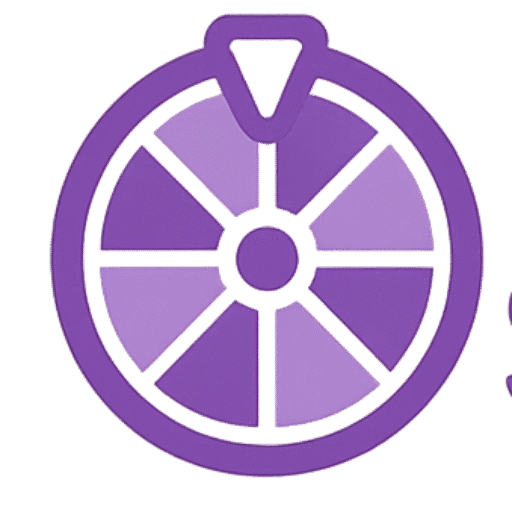

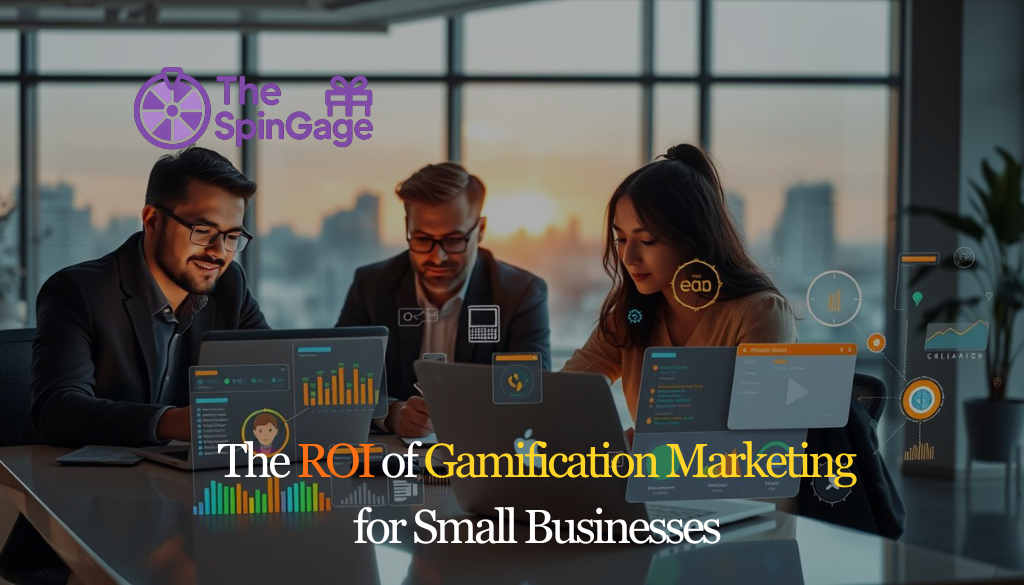


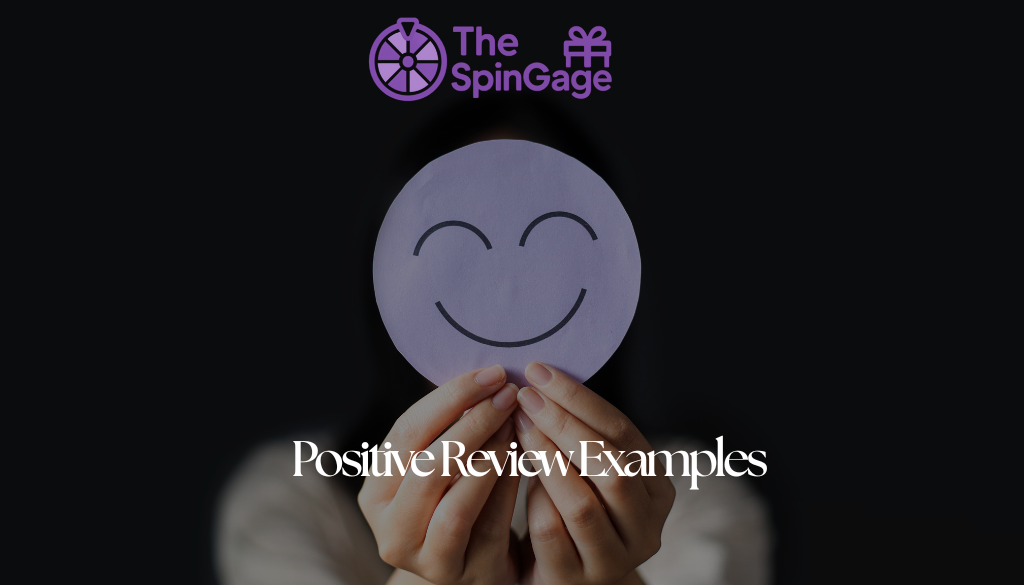
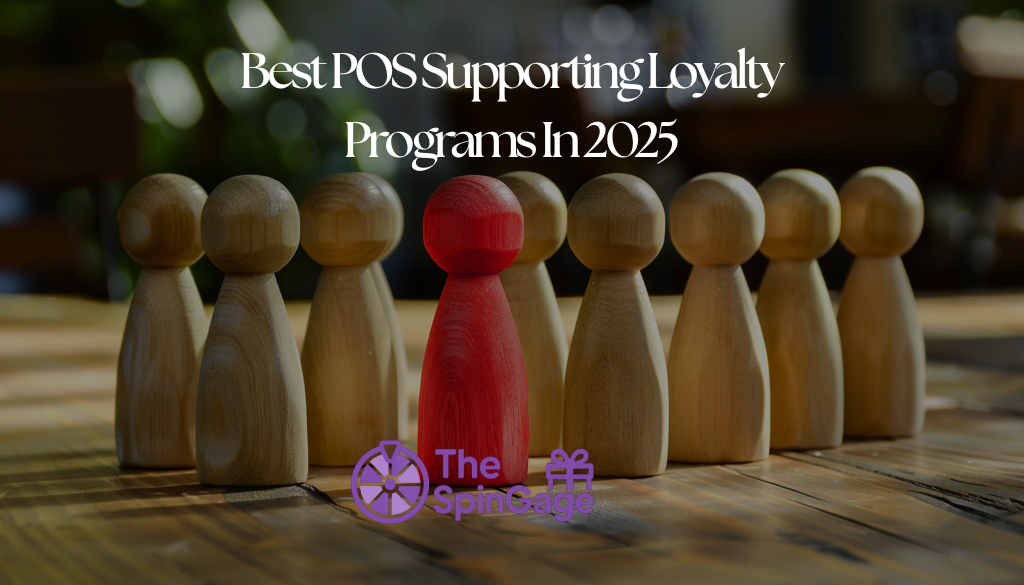
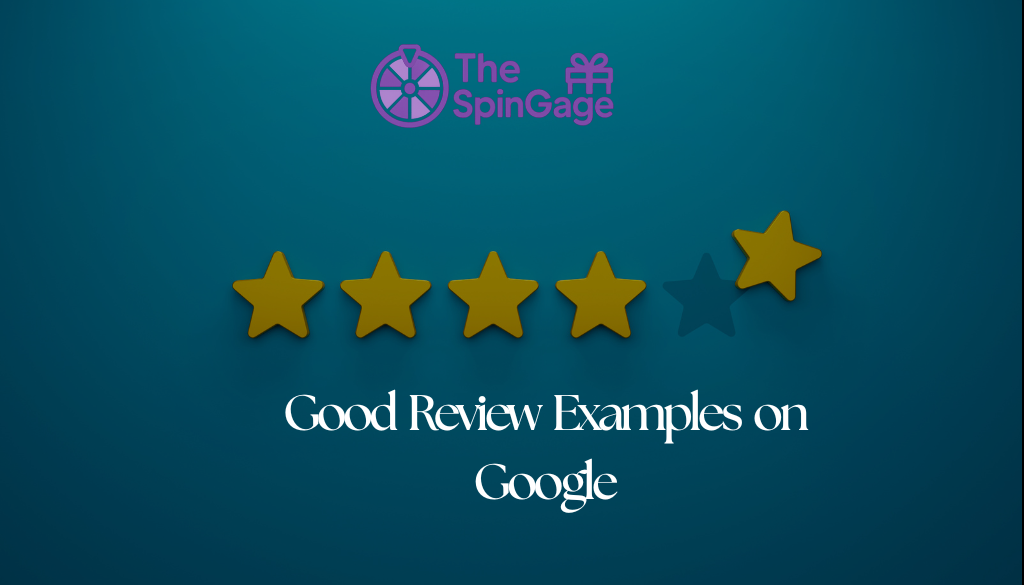



Leave a Reply